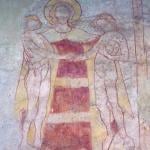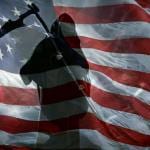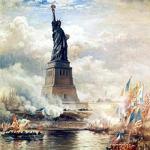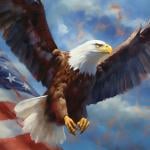THE ROMANCE OF PRODUCTION: I finished The Fountainhead in the fall of 1999, on the Metro-North from NYC to New Haven. I’d been spending a weekend in New York with my father, in the middle of an exceptionally hectic and emotionally exhausting term. I pretty much slept through half the visit–I was just run ragged. And really worried, edgy, stressed, all that fun stuff. We went to the Museum of Modern Art [EDITED: No we didn’t! It was the Met of course] and I basically submerged myself in the Arms and Armor wing, because it was the only exhibit engrossing enough to take my mind off my various obsessive worries. I expected to dread the ride back to New Haven, where I’d have to face whatever hideousness had occurred in my absence.
Instead, I had a terrific ride back. (And as it happened, everything had gone wonderfully without me–which was good, though not exactly an ego boost!) I spent the ride completely absorbed in The Fountainhead, not because I had any affection for Rand’s worldview (I found it repugnant), but because of the Banner. The scenes showing Gail Wynand’s newspaper–the roar and throb of the printing presses, the boycotts and “We Don’t Read Wynand” signs–captured my heart, because they so vividly captured what it felt like to make something, to love it, to see it threatened, and to fight for it. The newspaper-business passages had a visceral, vital energy. They made you want to be on Wynand’s team.
I was reminded of this feeling last week, when I finished The Amazing Adventures of Kavalier & Clay by Michael Chabon. K&C; is a good summer book. Not a great book; Chabon does overwrite, and the book certainly isn’t what Kafka called an ice axe for the frozen sea within. But then, an ice axe isn’t always what you want at the beach! K&C; reads fast and has several themes I found really compelling: Americanization and Jewish assimilation, escape as a theme in American lives, the nexus of homosexuality and friendship and fatherhood (I wonder if Chabon realizes that his sexual politics are much more reactionary than they at first appear…).
And it captures the romance of production. It gets that sense of how exhilarating it is to make something in the world, something that only you can make.
But K&C;‘s understanding of making is much darker, more self-aware, and more accurate, than Rand’s. The Fountainhead is a very weird book in several respects; one of its major weirdnesses comes from the way Rand wants to affirm the world while rejecting just about everybody in it. People are horrible, envious crabs in a barrel–but Man is a shining ideal! The world is a good place, uncorrupted by any original sin, that just happens to be, currently, run by fiends who chew up great men and spit them out.
In K&C;, on the other hand (be warned that this is one of the more florid passages): “In literature and folklore, the significance and the fascination of golems–from Rabbi Loew’s to Victor von Frankenstein’s–lay in their soullessness, in their tireless inhuman strength, in their metaphorical association with overweening human ambition, and in the frightening ease with which they passed beyond the control of their horrified and admiring creators. But it seemed to Joe that none of these–Faustian hubris, least of all–were among the true reasons that impelled men, time after time, to hazard the making of golems. The shaping of a golem, to him, was a gesture of hope, offered against hope, in a time of desperation. It was the expression of a yearning that a few magic words and an artful hand might produce something–one poor, dumb, powerful thing–exempt from the crushing strictures, from the ills, cruelties, and inevitable failures of the greater Creation. …The newspaper articles that Joe had read about the upcoming Senate investigation into comic books always cited ‘escapism’ among the litany of injurious consequences of their reading, and dwelled on the pernicious effect, on young minds, of satisfying the desire to escape. As if there could be any more noble or necessary service in life.”
Now this too is overstated, in the opposite direction from Rand. If art is escape-from, if it’s world-rejection, then art (for both creator and audience) is just a slow form of suicide. I don’t believe that. I think art can be that–Walker Percy is one of your best guides to that relationship to art, in both his fiction and his Lost in the Cosmos: The Last Self-Help Book. But art need not be that. Art can celebrate the shards of beauty that do exist in the world (although if it isn’t going to be just another pretty lie, it should show you both the beauty and the fact that it is in shards). Art can be an escape to something, not just from something. It can be a distillation of life, not just either a falsification of life or an attempt to reproduce life exactly as it is.
But any account of art (or the world) that doesn’t acknowledge how much there really is to escape from, how great the pressure for escape is, and how fiercely that pressure can drive both creation and destruction, is not so much incomplete as just pointless.











